
原本只是為了減肥,啟動每日步行十公里計畫 結果在走路過程中,意外發現台灣在地的美好
Apart from the North Gate, how many other gates have you seen in Taipei City?
When I was a child, I often heard adults talk about coming and going "in the city". Where exactly is the city, it sounded very unfamiliar, and the textbooks didn't seem to teach it.
But living in Taipei, I always see these city gates: the most common one is the "East Gate" on Ketagalan Avenue in front of the Presidential Palace and Zhongshan South Road. Whenever there is a rally, parade or election campaign, it can be seen on TV. figure. "South Gate" is located on the wide island separated by Aiguo West Road and Park Road. At the south intersection of Yanping, where people come and go, you can see the "Xiaonanmen" from a close distance.
There is also a "North Gate" that used to be close to the viaduct, which has become one of the most eye-catching attractions in Taipei.
It is hard to imagine that the area built by these city gates (there is also a demolished west gate) was really a city a hundred years ago, called "Taipei City", or "Taipei Fucheng".
In fact, the ins and outs of Taipei City are rarely discussed. It was not until the Taipei City Government launched the "Western District Gateway Project" in 2015 and demolished the Beimen Viaduct early the next year, so that the "North Gate" could be seen as a national gate. .
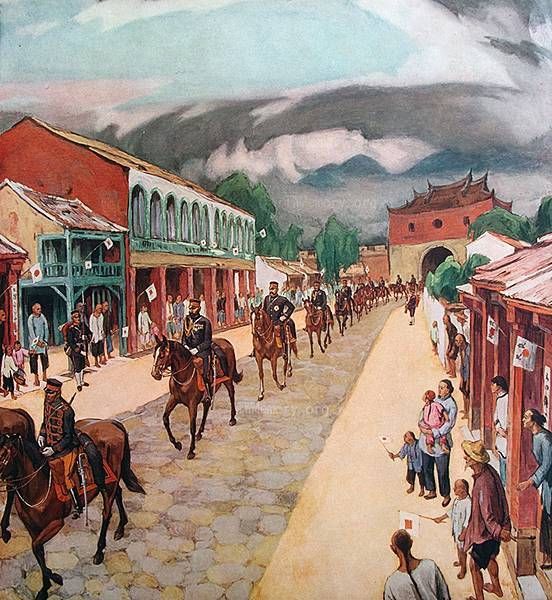
【Taipei builds a government and builds a city】
The opportunity for the construction of the city was due to the "Peony Society Incident" in southern Taiwan during the Tongzhi period of the Qing Dynasty, which made the Qing court realize the importance of Taiwan's strategic position, so it began to actively manage Taiwan, adding prefectures and counties, and began to plan to build a new one in the north. A strong city, with important administrative institutions placed within the city's outline.
After careful scrutiny, the Qing court selected the area between Mengka and Dadaocheng, which had been developed at that time, as the base of Fucheng. Today, the rectangular area surrounded by Zhongxiao East Road, Zhongshan South Road, Aiguo West Road, and Zhonghua Road is the scope of Taipei City. .
The stone materials for the construction of the city wall are mainly andesite quarried from Jinmian Mountain in Neihu, and a small amount of andesite and Sali'an stone from Bali Guanyin Mountain.
The andesite of Jinmyeon Mountain is made by quarrying at the Beishihu quarry on the mountainside to make rectangular stones about 1 meter in size. The stone transportation route starts from Lane 91, Section 1, Neihu Road, to the old ferry head of Beishi Lake and gets off the transport ship. It follows the Keelung River through Dazhi, Jiantan, Dalongdong, and Fanzigou to Danshui River, and then goes upstream along the Danshui River to reach the destination. "Hegoutou" near the North Gate went ashore.
【4+1 city gates】
Since the establishment of the mansion in 1875, the prefect Chen Xingju started to build the city wall, which was completed in 1884. The circumference of the city is 4.6 kilometers. There are also five gates built: North Gate (Cheng'en Gate), East Gate (Jingfu Gate), South Gate (Lizheng Gate), Xiaonan Gate (Chongxi Gate) and West Gate (Baocheng Gate). "Inside" has also become a proper noun.

The North Gate, also known as Cheng'en Gate , faces the north and means "inheriting the grace of heaven". It is the only remaining Hokkien-style original city gate in Taipei. The North Gate was the hub of business and trade in the city leading to Dadaocheng during the Qing Dynasty, and it was also an important gateway to Shilin and Danshui River.
Yanping South Road in front of the North Gate, called "Futai Street" in the Qing Dynasty, was the main road in and out of the North Gate in the past.

The East Gate, also known as Jingfu Gate , is located in the east of the city and was built in 1882, two years earlier than the city wall. It was an important passage leading to Dongmen (Dongmending) and Xikou (Songshan) at that time. Since it was facing Keelung Port, the most important river port in northern Taiwan, it was not only used for trade, but also had a heavy duty of defense.
The East Gate is also the most exquisite city gate among the five gates. The stone-built city seat is connected to the eaves with thick brick walls, like an unbreakable square fortress.
Inside the double brick wall, it is a wooden structure. The roof is a Xieshan-style dovetail ridge, and the eaves are decorated with green-glazed hollow tiles, which is very elegant. The part of the tower was rebuilt into a palace-style building in northern China in 1966, but the stone pedestal and round arch are still the original building materials.
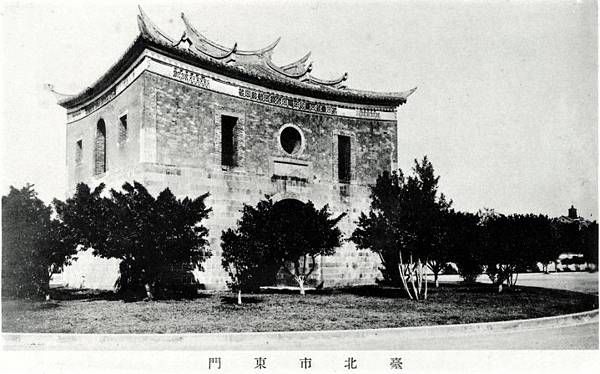
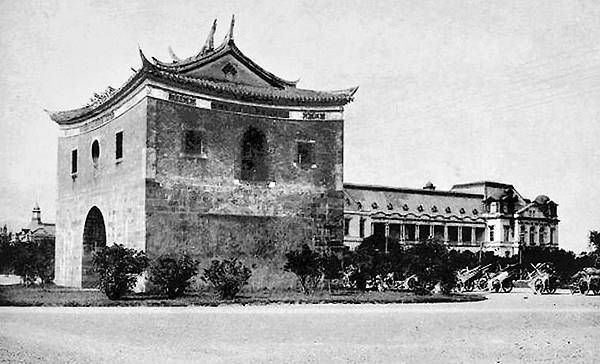
The South Gate, also known as Lizheng Gate , is an important passage leading to Jingwei (Jingmei), Shenkeng, and Shiding. The stone forehead is surrounded by a dragon pattern. It is the most magnificent of all the city gates. main door. During the Japanese occupation period, although the South Gate was preserved, it was in disrepair and dilapidated. It was rebuilt into a northern palace-style tower in 1966 along with the East Gate.
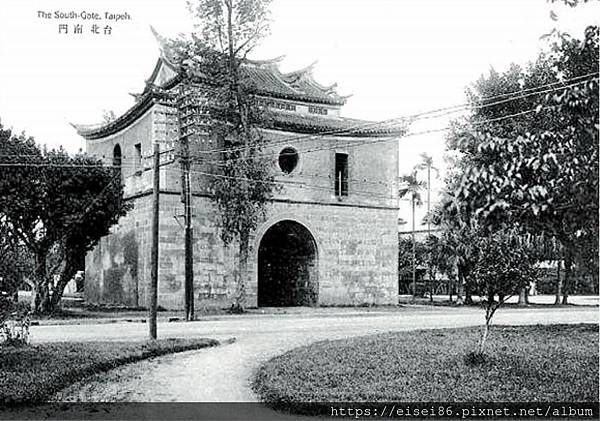

Xiaonanmen, also known as Chongximen , is the main passage leading to Fangqiao (Banqiao). According to legend, Xiaonanmen was donated by the family of the wealthy businessman Lin Benyuan in Banqiao, in order to avoid the Quanzhou forces of Mengka and facilitate access to Taipei City. Compared with other bunker-style gates, Xiaonanmen is the only column-style gate.

Ximen, also known as Baochengmen , is named after the connection with the Manga area, so it takes the meaning of "treasures achievement", hoping to maintain the prosperity of the circulation of Manga. It is the most gorgeous of the five gates.
The West Gate was completed in 1882 and demolished in 1905. It is the only city gate that has disappeared in Taipei Fucheng. Today, the intersection of Baoqing Road and Hengyang is the former site of the city gate.

I don’t know if you have noticed that the roads in Taipei are often twisted and twisted. In addition to being related to the original landform texture such as streams and canals, there is actually another reason, and that is Feng Shui.
Since ancient times, the Han people have attached great importance to Kanyu, and the construction of cities is no exception. If you pay attention to the map, you will find that the city is not parallel to the main road in the city, which is said to be related to Feng Shui.
In the early days of the city's construction, the prefect of Taipei, Chen Xing, gathered between Dadaocheng and Mengjia, and took the lead in building a street "directly south and north", and then planted bamboo in the area where the city wall was to be built to stabilize the foundation.
However, in 1882, Liu Ao, Taiwan's Bingbei Daotai, believed that the original location of the city was facing Datun Mountain, and the feng shui was not good. So he waved his hand and turned the city eastward by 14.3 degrees, aligning the axis with Qixing Mountain (1120m), the highest peak in Taipei, forming the axis of the emperor.
As a result, the streets in the city are not parallel to the city wall.
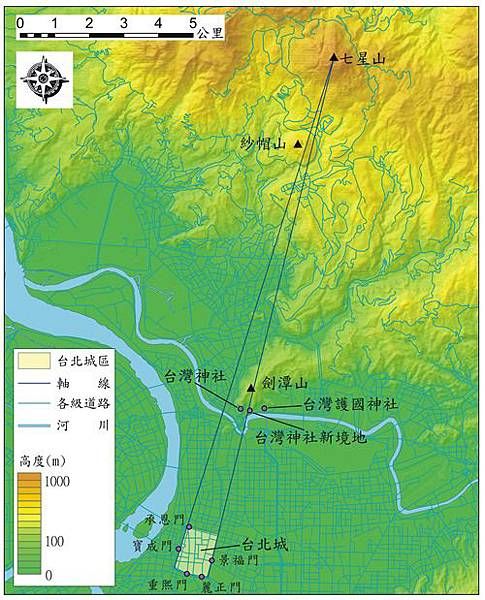
However, this Taipei City, which took a lot of effort to build, has actually existed for less than 30 years.
After the Japanese ruled Taiwan, they found that the environmental sanitation in Taiwan was not good, especially around the city walls, people who urinated and spit, and littered garbage and chicken bones were all dirty, not only hiding dirt but also hindering the development of the city. In 2008, the city walls were demolished and roads were rebuilt.
Originally, the five city gates were also planned to be demolished together, but after the demolition of the first "West Gate", there was a strong backlash from the people, so the Governor's Palace changed its plan, and the other city gates were not demolished.
However, it is a pity that in 1966, the four gates were renovated by the Taipei City Government at that time on the grounds of "rectifying the city appearance to meet the needs of tourism".
The east gate and south gate of the original bunker-style tower were rebuilt into glazed tile pavilion-style buildings imitating the northern palace style, and the small south gate of the original column-style tower was also reshaped.
The North Gate was originally also included in the renovation, but at that time it was not rebuilt because of the plan to build an elevated road on Zhongxiao West Road and the plan to demolish the North Gate. Later, when the construction of the Beimen Viaduct started, the city government agreed to revise the construction plan after the efforts of scholars and scholars of literature and history.
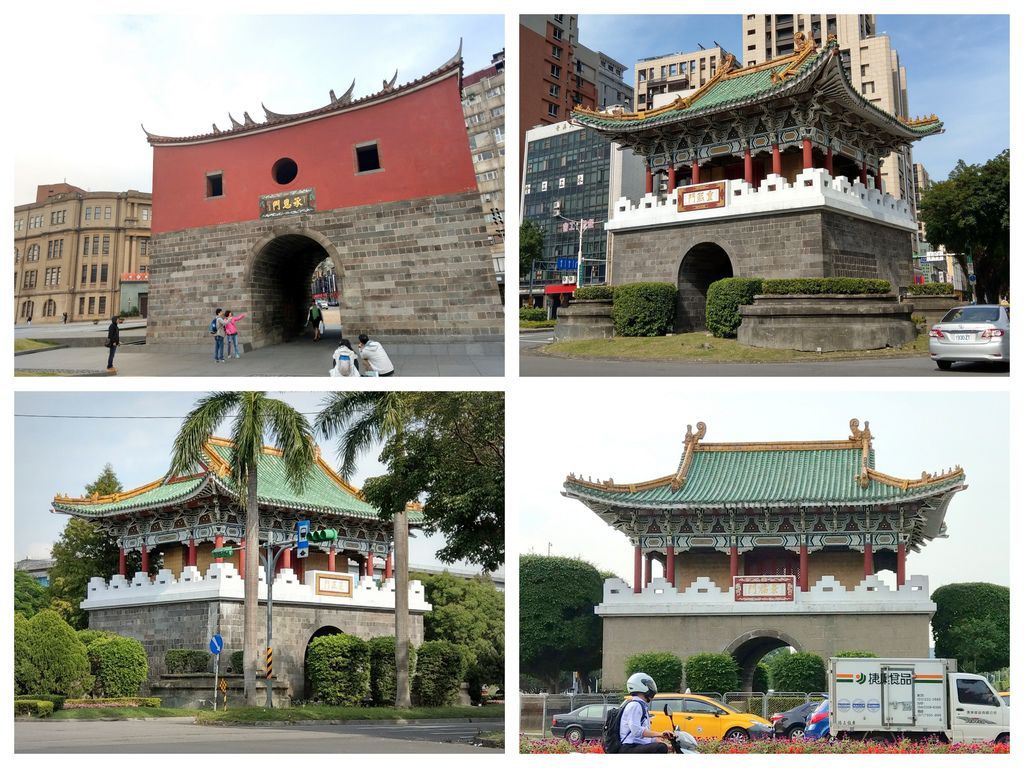
After the Japanese demolished the city wall, based on the land and foundation stone of the old city wall, they built a 40-meter-wide Taipei Ring Road, called the "Three Routes", which was officially completed in 1909.
The so-called three-line refers to the road imitating the European urban planning, and two green spaces are set in the center of the road to form a three-line lane separating the island.
Along the third route, a large number of imitation Western-style buildings were deliberately built, which are rich in exotic atmosphere, making Taipei City once known as the "Little Paris of the East".
In the early years of the Showa era in Japan (about 1930s), Taiwan introduced Western customs and began to develop a trend of free love. The three-lane area has also become a good place for a date and a walk in downtown Taipei.
In the first lyric of the popular Taiwanese ballad "Moon Night Sorrow", it describes the feeling of waiting for a lover on the third line
The moonlight shines on the three lines,
The wind is blowing slightly, and the person who is waiting will come
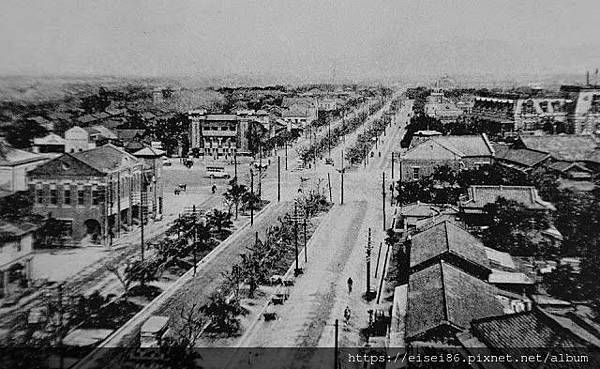
As for the dismantled city wall stones estimated to be as high as 300,000, where did they go?
The Japanese use these stones as building materials, and the public institutions in the center of the prefecture have used a large number of city wall stones as the cornerstone of the building, and some of them are used as the cornerstone of the side of the ditch.
Near the MRT Dongmen Station, next to Chunghwa Telecom in the second section of Jinshan South Road, the fence of "Taipei Prison" is built with city wall stones, witnessing the history of Taipei City.
As for where else can you see the city wall stone? Please come and discover together!

Extended reading: Follow the water bottle teacher and go to the east gate. Taipei Prison Office x Huaguang Community x 46 Incident x Jinhua Mansion x Qingtian Qiliu
Like my work?
Don't forget to support or like, so I know you are with me..
Comment…